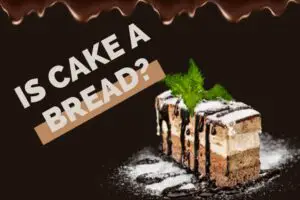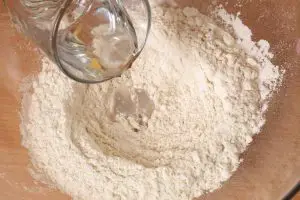There is little that is more frustrating than baking bread, only to find that you have burned bread on the bottom. The main reason that this happens is that your oven doesn’t distribute the heat evenly. The upper and lower areas of the oven could have different temperatures, which affects the way that heat is transferred to the bread. The key to baking your bread without burning it is to learn how to use your oven.
Five Ways to Stop Bread From Burning on the Bottom
There are several different ways that you can stop your bread from burning on the bottom. Take a look at how to keep bread from burning on the bottom.
1. Place the Loaf on a High Shelf in the Oven
When you bake in your oven, it often has the heating element in the bottom. This is why the bottom of your loaf burns. The heat reaches the bottom first, and if you have it on a lower shelf, it could burn before the top is finished cooking. Ideally, you can place it in the center of the oven on a shelf, but you can also place it higher up to prevent burning.
2. Use a Heat Insulator
Another way to stop your bread from burning is to place a heat insulator in the oven. It should sit between your loaf and the heating element, and the heat insulator will absorb direct heat and allow the heat to be distributed more evenly above it and throughout your loaf of bread.
You can use different materials as heat insulators, as long as they have thermal heat conductivity greater than 1.0 W/m.K. There are different materials that do, including baking trays, tiles, a baking stone, pyrex, and aluminum foil. The key is to make sure that it doesn’t block the heat from reaching the loaf; it should absorb enough to redistribute the heat more evenly above. It shouldn’t touch the loaf because this would still possibly burn it.
3. Use a Lighter Colored Pan
Many people don’t realize that the color of the baking pan makes a difference in how the heat is distributed. Dark colored baking pans absorb heat and can make the loaf burn on the bottom. Meanwhile, light colored baking pans reflect heat so that your bread will cook more evenly. Make sure that you choose light colored baking pans, or you can use ceramic or glass. This way your pan won’t absorb heat and cause bread burning.
4. Use Baking Paper in Place of Oil
People often oil the surface of the baking pan to help prevent the bread from sticking. The problem is that oil has high thermal conductivity so it will heat up the bottom of the loaf faster than the rest of it. You can use baking paper or parchment paper in place of the oil. It will prevent the loaf from sticking, but it won’t cause the bottom of the loaf to burn.
5. Try Misting the Baking Surface
If you don’t have any other options, you should try misting the baking surface with water after you preheat the oven but before you place the bread inside. When you spray the mist, the water will evaporate, which will lower the temperature of the baking surface. When the temperature is lowered, it will slow down how quickly the heat rises, which reduces the chance of burning the bottom of your loaf.
How to Set up Your Oven for Baking Bread?
A large part of baking bread is how you set your oven up. You can avoid issues with your loaf burning on the bottom by taking the time to get to know your oven and how it bakes best.
First, place one of the racks as low as you can, and place a baking stone or other item designed to absorb some of the direct heat onto the bottom rack. You should do this before you bake your bread.
Some people start out by heating the temperature in the oven to 500 degrees Fahrenheit for 30 minutes before baking the bread. This allows the top of the oven to heat up, and then when you reduce the temperature, the heat will be more evenly distributed.
You should take a spray bottle and fill it with water. You need to keep it in the oven so that you can create steam to help your loaf rise and form a thick crust.
Baking
When you are ready to bake your bread, spray it with the mist of water, and you can score the bread with a scoring tool to promote an even rise. Then, place it in the oven for 15 minutes. After this time is up, vent the steam and heat for a minute because too much steam will prevent your crust from forming. However, it is important in those first 15 minutes because steam is a good conductor of heat and helps your dough rise evenly.
Then, you can reduce the oven temperature to 450 and cook it for another 15 minutes. The first 15 minutes is important because the yeast feels the heat and speeds up fermentation at this time. It sends out carbon dioxide, and the carbon dioxide expands as it heats. This is what causes the bread to rise as it cooks. You need it to rise from the heat without burning.
Scoring is important because it controls the expansion and helps prevent rupturing. You will get a more uniform rise. You only need to slice in about 1/2 inch of the dough, and it ensures that you get an even rise.
The steam is important because it does a better job of conducting heat than dough, and it allows the temperature to rise more uniformly than it would on its own. It also reduces the resistance of the surface of the dough, which allows more even rising.
Final Words
Making sure that your bread doesn’t burn on the bottom requires that you get to know your oven. Once you understand how it works, you will be able to control the heat distribution and bake excellent bread.






